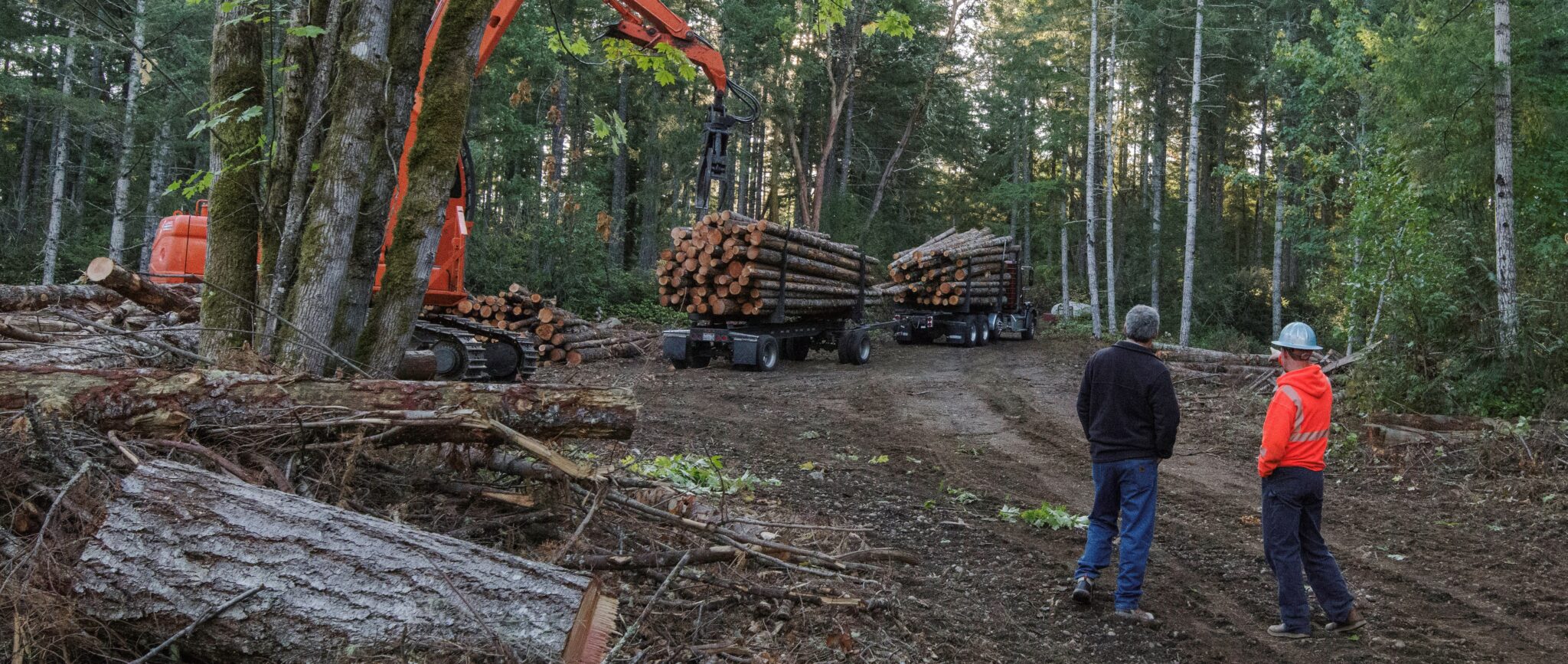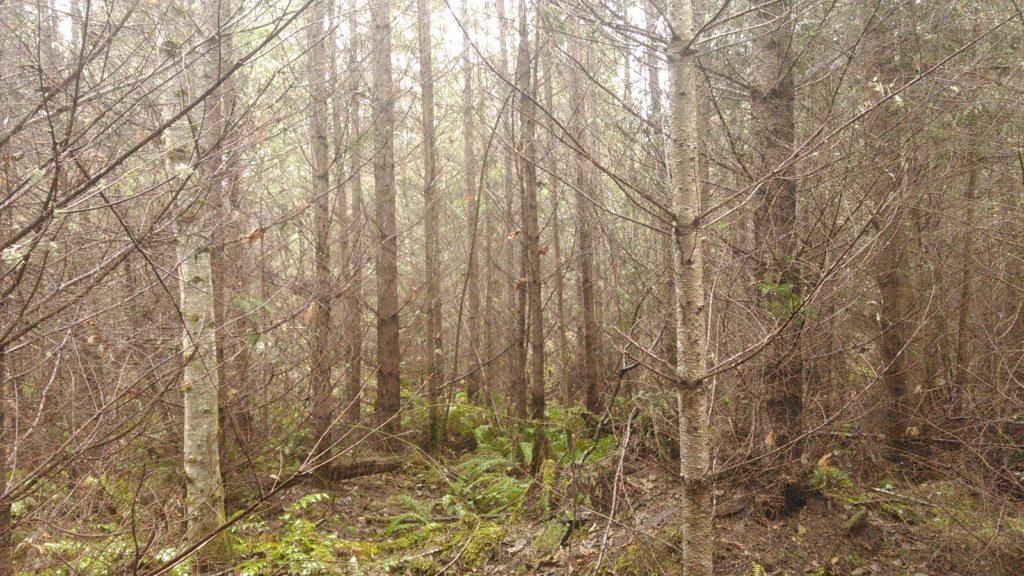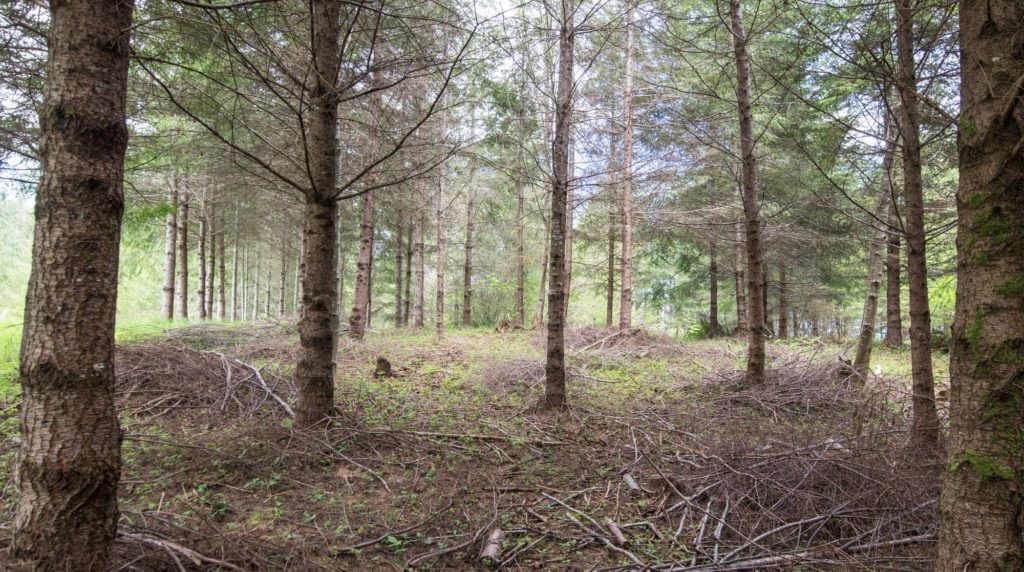
Thinning & Selling Trees
Resources on thinning and selling trees
Forest ecosystems have a natural carrying capacity and can sustain only a finite number of trees and vegetation. As seedlings grow bigger, they begin to compete with one another for the resources they need to survive, resulting in some seedlings and young trees dying-off.
In many Pacific Northwest forests, previous managers have removed the very features that gave the forests their structural complexity—such as big trees, large snags, down logs, and multi-layered canopy—and then planted seedlings at dense spacing. These crowded, overstocked stands often have diminished tree growth, poor wildlife habitat, low understory diversity, and increased wildfire risk. In planted stands that have been artificially overstocked, there’s often a need to do some thinning.


Thinning helps the remaining trees better access the water, soil nutrients, and light they need to grow vigorously and resist insects and diseases. It also helps release the space and light needed to activate understory vegetation growth and thereby improve habitat and food available for wildlife―increasing overall biodiversity. Thinning can also be a tool to reduce wildfire risk in the “dry-side” ecosystems common in central and eastern Oregon and Washington.
PRE-COMMERCIAL THINNING
Young-stand thinning (aka pre-commercial thinning) is a silvicultural practice that entails removing the individual trees that are declining―often they are smaller and have less robust crowns―and are less than 20 years old.
While young-stand thinning is sometimes done at a cost, the resulting long-term forest health benefits can improve the returns for commercial harvests in the future. “To delay the thinning and wait for the trees to grow enough to make the thinning harvest profitable is appealing, but deceptive. It may avoid the short-term expense, but is likely to weaken the stand at a long-term cost of growth, stand stability and future options,” says OSU Forestry & Natural Resource Extension Agent Brad Withrow-Robinson in the Tree Topics blog.
RESOURCES ON THINNING
Before Harvest
- How to Measure Woody Biomass in Your Forest – This guidebook provides landowners with a practical inventory system for estimating the volume of timber and woody biomass in their forest. By using these guidelines, landowners can more easily collect information to inform their forest management decisions.
- Woody Biomass Calculator – This calculator tool allows forest owners to convert basic tree measurements and forest data into estimates of timber and biomass volumes.
- OSU’s Small-scale Harvesting for Woodland Owners
- WSU’s Managing a Timber Sale
- WSU’s A Primer for Timber Harvesting
- NNRG’s Introduction to Harvest Systems
- WSU’s Assessing Tree Health
- OSU’s Many Young Stands Too Crowded
- OSU’s Spacing Young Conifer Stands
- OSU’s Young Stand-Thinning Strategies
During Harvest
- Optimizing Timber Values
- Video Series: Beginning Tree Felling
- Sample Contract
- Log Lines
- Timber Sale Checklist
- Timber Sale Checklist (Excel)
- Timber Sale Resource List
- Timber Sale Valuation Worksheet
After Harvest
- Practices to Steward a Beautiful Forest after Timber Harvest – this guide, intended for forest owners who are preparing to log or have just finished a timber harvest, focuses on planning for a successful harvest and taking advantage of the years after harvest to understand how the forest is responding and to proactively address common forest health concerns.
- NNRG’s Post-Harvest Resources list
- Timber sale revenue worksheet
- Timber sale task checklist
Additional resources on thinning and other topics are available in the NNRG Resource Library.
NNRG Resource Library
